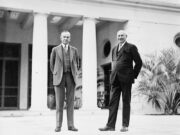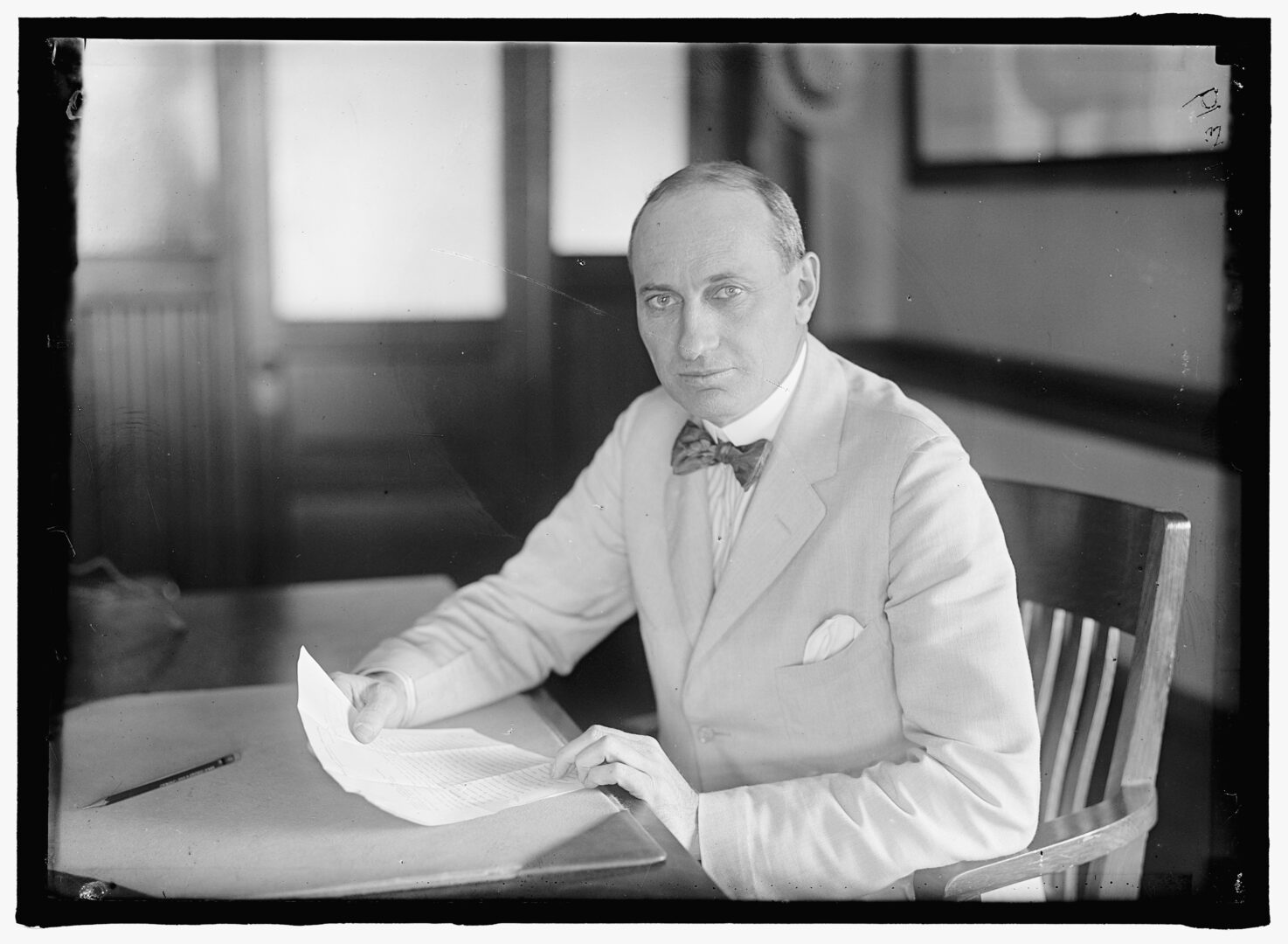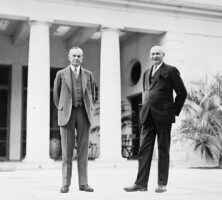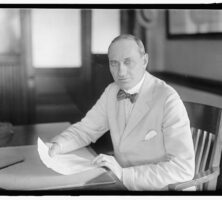A successful pioneer in the automobile industry, Howard Coffin rebuilt an abandoned antebellum mansion on Sapelo Island and revitalized the agricultural potential on it, developed St. Simons Island and Sea Island as Georgia’s premier coastal tourist destinations, and provided seed money for the mighty pulpwood industry that continues to thrive in the state’s Coastal Plain.
Born in 1873, Howard Earle Coffin grew up on an Ohio farm and in Ann Arbor, Michigan, where he studied engineering at the University of Michigan. It was there that he constructed his first automobile. It was steam-powered, and he used it to deliver the mail around town. He also made use of the university’s engineering shop in 1898-99 to build his first internal combustion engine. In 1902 the Oldsmobile Company hired him as chief experimental engineer. By 1905 Coffin was Oldsmobile’s chief engineer. Later he worked for the E. R. Thomas–Detroit Motor Car Company, the Chalmers–Detroit Motor Company, and the Hudson Motor Car Company, serving as vice president and chief engineer of each and designing many of their early models.
Coffin is known in automotive circles as the Father of Standardization, a result of his initiative in standardizing material and design specifications and in arranging for automobile manufacturers to share their patents. These accomplishments enabled the American automobile industry to grow quickly.
Before World War I (1917-18) Coffin served on the Naval Consulting Board, which helped plan the possible involvement of the United States in that conflict. Coffin led the 1916 preparedness campaign, including an inventory of the nation’s industrial capacity, something that had never been attempted before. When the United States entered the war, U.S. president Woodrow Wilson named Coffin to the Council of National Defense, which served as the country’s unofficial war cabinet. Coffin’s job was aircraft production. Through his leadership the U.S. Army Air Service ultimately became a significant arm of the military. He also led in building the revolutionary Liberty airplane engine.
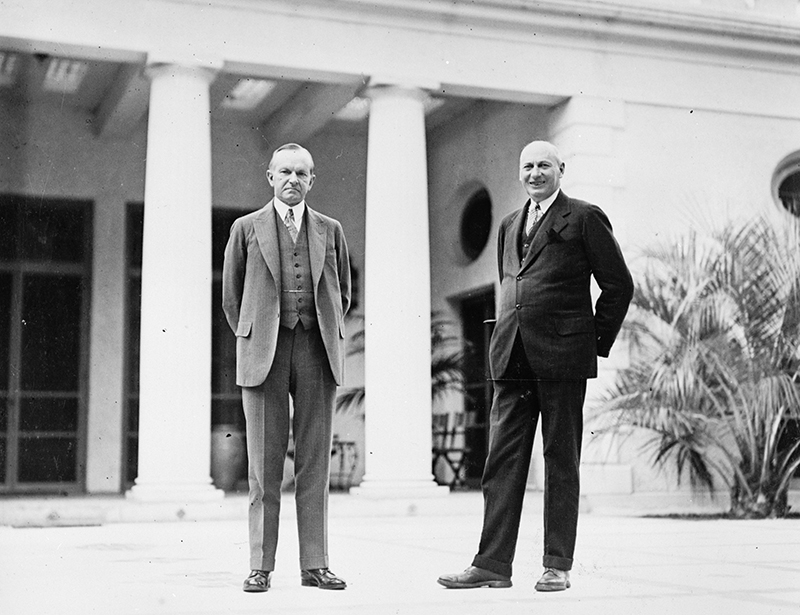
Courtesy of Georgia Archives.
After the war Coffin helped launch the nation’s commercial aviation program. He helped found and served as board chairman of the National Air Transport Company, a forerunner of United Airlines. In 1925 he served on the Morrow Board, which President Calvin Coolidge named to investigate and make recommendations regarding the federal government’s role in air safety and in creating an air defense system. The board’s recommendations established the principle of federal regulation of civilian flying, a vital step toward a federal air law.
Automobile racing first drew Coffin to Georgia. He considered racing as a means to test and advertise early automobiles, several of which he had designed. At a 1911 contest in Savannah he learned that Sapelo Island was for sale. Coffin and his wife, Teddie, who had visited the coastal area, jumped at the chance to buy 20,000 acres of the Sapelo Island land and marsh for $120,000.
He constructed a palatial home on Sapelo Island, using the existing tabby walls and foundation that had constituted Thomas Spalding’s antebellum mansion. What followed were numerous improvements to the island: he had drainage ditches blasted, fields cleared, an oyster-canning facility constructed, and roads cut. Soon Sapelo was host to a number of dignitaries, including aviator Charles Lindbergh, President and Mrs. Calvin Coolidge, and President and Mrs. Herbert Hoover.
During this period Coffin bought vast tracts of land along coastal Georgia, and when paved roads began penetrating the area he foresaw the potential for tourism. This prompted Coffin to purchase several plantations on St. Simons Island, where he began extensive development, including a golf course, a yacht club, paved roads, electricity, and a residential subdivision. Almost as an afterthought he purchased an adjacent island, which he named Sea Island. This is where he eventually built the Cloister, an exclusive resort.
A causeway constructed during the 1920s between the mainland and St. Simons Island enabled tourists and day visitors to reach the beach area easily. Coffin used his floating dredges to strengthen the existing causeway and also to build a causeway between St. Simons and Sea Island. This ensured the success of the Cloister, the only major resort between Miami, Florida, and the golfing community of Pinehurst, North Carolina.
Coffin made another major contribution to coastal Georgia’s economy by recognizing the area’s potential for growing pine trees that could be used as pulpwood. In 1927 he invested $10,000 in an experiment to determine if pine chips from Georgia trees could be processed into paper pulp. The success of this led to the creation of the Brunswick Pulp and Paper Company, one of the many pulp mills that now dot the Eastern Seaboard.
Coffin died in 1937. His Sea Island resort was run by family members until 2010. The family was forced to sell the property after the 2008 global recession. The partnership that now owns the property has continued renovations, opening a 5,800-acre hunting plantation in 2012. His Sapelo Island mansion is owned and operated by the state of Georgia. Georgia’s vibrant coastal area is his most visible and significant contribution, along with the pulpwood industry he foresaw and actively supported.


